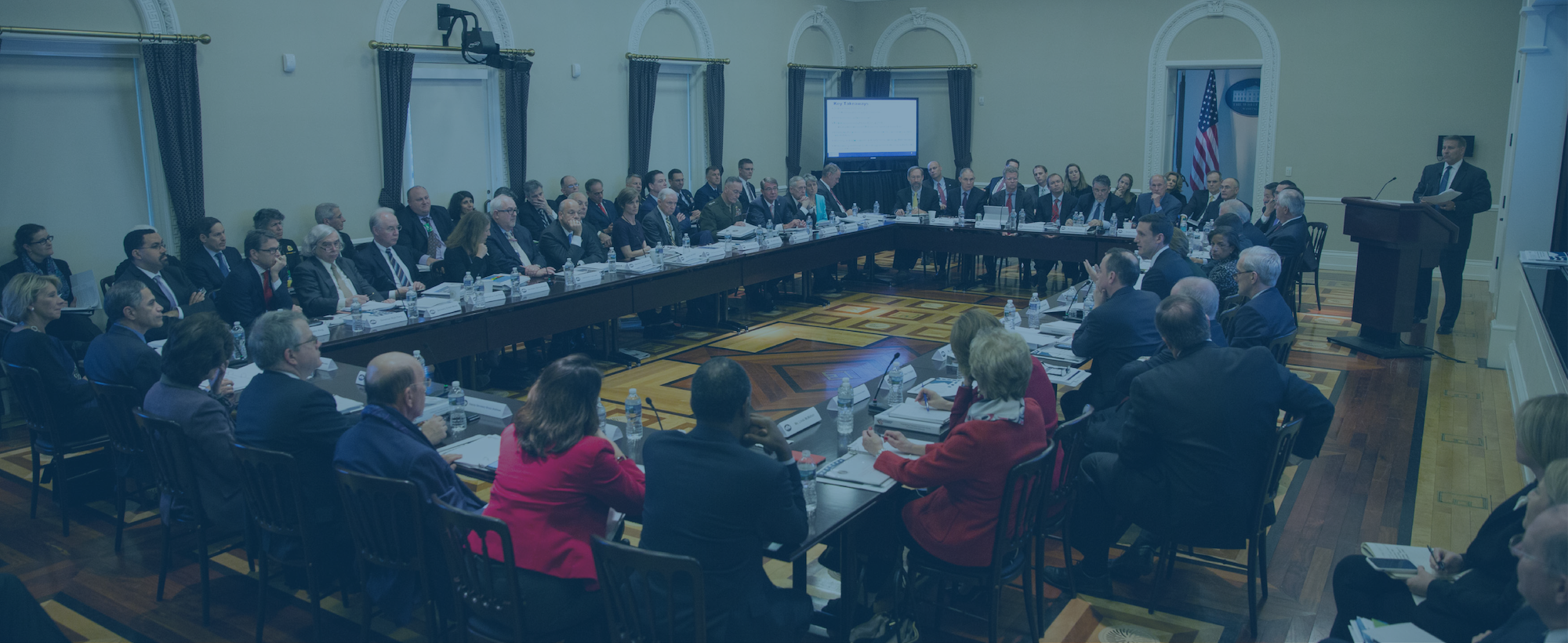
Navigating the Senate confirmation process to fill national security leadership positions
Terrorist attacks of Sept. 11, 2001
The deadliest terrorist attack on U.S. soil occurred on Sept. 11, 2001, when members of the terrorist group al Qaeda hijacked four commercial planes, two of which hit the World Trade Center while one crashed into the Pentagon and another crashed in an open field in Pennsylvania. Nearly 3,000 people were killed. The attack occurred about eight months into President George W. Bush’s presidency.
The already brief transition period for the incoming Bush administration had been shortened by 36 days due to the adjudication of the disputed 2000 election. Those lost days reduced the opportunities for Bush to receive intelligence briefings and make decisions for national security leadership positions. The subsequent bipartisan “9/11 Commission Report” stated that a delayed presidential transition “hampered the new administration in identifying, recruiting, clearing, and obtaining Senate confirmation of key appointees.” The report further explained how vacancies in top leadership positions can affect how information and policies are managed.
As chairs of the commission Thomas Kean and Lee Hamilton wrote, “We found…that the Bush administration, like others before it, did not have its full national security team on the job until at least six months after it took office.” FBI Director Robert Mueller was not in place until Sept. 4—just one week before the attacks. James W. Ziglar was not confirmed by the Senate to be commissioner of the Immigration and Naturalization Service until July 31. At the Department of Defense, Undersecretary for Policy Douglas Feith was not confirmed until July 12. The assistant secretary for special operations and low-intensity conflict—a key counterterrorism office—was not filled by the Bush administration prior to 9/11.
As chairs of the commission Thomas Kean and Lee Hamilton wrote, “We found…that the Bush administration, like others before it, did not have its full national security team on the job until at least six months after it took office.”
Bush’s Secretary of Defense Donald Rumsfeld later told the commission that he felt the Defense Department was not organized adequately or prepared to deal with new threats like terrorism prior to 9/11. He added that his first months in office were consumed with getting new leadership in place and working on a new defense policy. A longer transition period may have allowed the administration to make some of those decisions earlier on.
The 9/11 Commission recommended comprehensive structural and management changes to promote information sharing among intelligence agencies and to improve the transition process to get leaders in place more quickly. Many of those proposals were enacted as part of the Intelligence Reform and Terrorism Prevention Act of 2004.
Lessons learned: New presidents are not afforded a learning curve when assuming office and it can take time for relationships and trust to evolve between agency leaders. Even with the planning recent transition teams have done in identifying officials early, no recent president has been able to fill the majority of their key national security positions soon after taking office.
An examination of more than 30 top national security leadership positions shows that Bush filled or nominated individuals for only 25% by Inauguration Day, and only 34% by day 30. His progress in the early months does not necessarily account for the new understanding created by 9/11 and the subsequent creation of the Department of Homeland Security.
His successors have not fared much better: Obama nominated or filled nearly half (47%) of those positions by his first day in office, followed by Trump with 29% and President Joe Biden with 35%. By their 100th day in office, only Biden had nominated officials to fill three-quarters of these crucial Senate-confirmed positions.
Turnover is also a big issue for administrations planning for a second term. They, too, must plan in advance how to fill leadership posts and navigate the Senate confirmation process long before knowing whether they will win reelection. The last three two-term presidencies had to deal with substantial turnover among their top political appointees early in their second term. In fact, a Center examination found that an average of 46% of secretaries, deputy secretaries and undersecretaries serving an incumbent president on Election Day resigned from their positions within six months into the second terms.
Filling national security leadership positions should be a top priority for transition teams long before any White House takes office.
Filling national security leadership positions should be a top priority for transition teams long before any White House takes office. Streamlining the paperwork and vetting processes before nomination, as well as improving the Senate confirmation process itself, is necessary for leaders to take their seats and establish themselves as a team as soon as possible.









